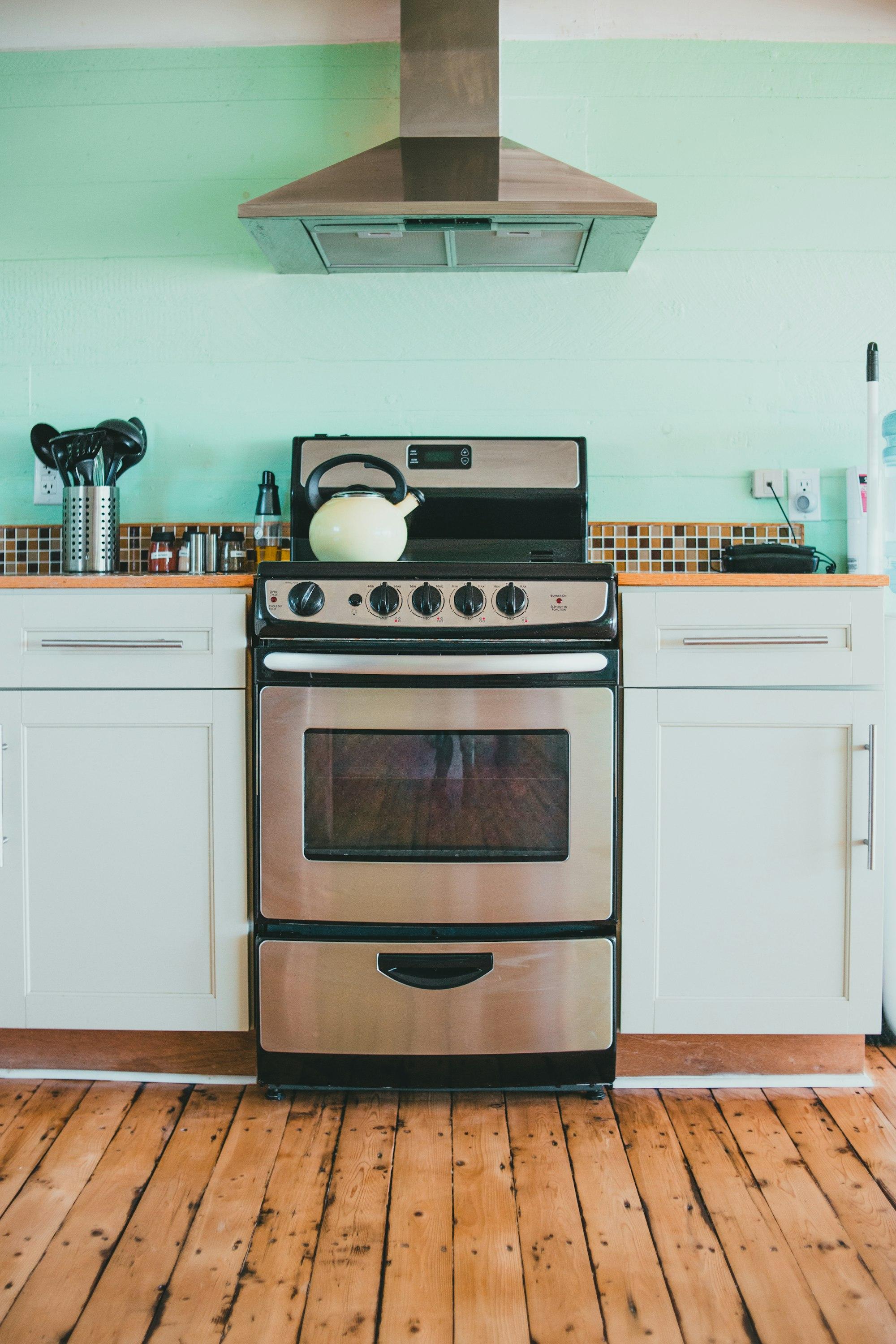Conventional Oven vs. Convection Oven
Convection ovens cook faster and more evenly using a fan to circulate heat, while conventional ovens rely on top and bottom heating elements for familiar, budget-friendly cooking.

Photo by Erik Mclean
Think about your kitchen setup: the type of oven you choose can influence everything from how quickly your dinners come together to how evenly your pastries bake. Among the most common options are the conventional oven and the convection oven. Though they may look similar, the key differences in how they heat can significantly impact cooking times, energy use, and final results. Understanding each type’s pros and cons ensures you select the perfect fit for your cooking style and needs.
1. What is a Conventional Oven?
In many homes, the standard oven—often referred to as a conventional oven—uses heating elements at the top and bottom to warm the air inside. Adjusting the oven racks lets you control how close dishes sit to these elements, affecting cooking speed and browning. Since most recipes are developed with conventional cooking times and temperatures in mind, it’s often the more familiar choice for everyday use.
Benefits of Conventional Ovens:
- Straightforward, familiar appliance for most cooks
- Typically more budget-friendly than convection models
- Ideal for roasting meats and making stews or casseroles
- Recipes are commonly written for conventional temperatures and times
2. What is a Convection Oven?
A convection oven, often called a “true convection” model, adds a fan and a third heating element into the mix. This setup circulates hot air throughout the oven, maintaining a more uniform temperature. The result is faster, more even cooking, which helps achieve crispier textures and consistent browning without rotating dishes. Because of its efficient heat distribution, a convection oven can also cut down on energy use.
Benefits of Convection Ovens:
- Shorter cooking times and quick preheating
- Even heat distribution, reducing hot spots
- Energy-efficient operation
- Excellent for air-frying, baking bread, cakes, and pastries
- Works well with standard bakeware, though shallow pans may enhance results
3. Key Differences Between Conventional and Convection Ovens
When deciding between a conventional and a convection oven, consider cooking style, time, and energy usage:
- Heat Distribution:
- Conventional: Radiant heat from top and bottom elements.
- Convection: Fan-driven circulation for consistent, even heat.
- Cooking Speed & Quality:
- Conventional: Perfectly fine for many dishes, but may need careful positioning for even results.
- Convection: Cooks faster, browns more evenly, and excels at creating crisp textures.
- Energy Use:
- Conventional: Uses more energy over time due to slower cooking and no fan.
- Convection: Generally more energy-efficient due to quicker, more uniform cooking.
4. Ideal Uses for Each Oven Type
- Convection Oven:
Perfect for baked goods that require even browning (breads, pastries, cookies) and any dish where a crisp exterior is desired (roasted vegetables, poultry). It’s also a great option for cooking multiple dishes at once since the circulating heat prevents temperature discrepancies. - Conventional Oven:
Great for those who prefer a familiar cooking style. Excellent for casseroles, stews, and slow-roasted meats. Multiple racks make it easier to customize placement for optimal browning and texture.
5. Adjusting Recipes for a Convection Oven
Convection ovens cook more quickly and efficiently than conventional ovens. If a recipe was written for a standard oven, remember the “25/25 rule” when adapting it:
- Reduce the recommended baking temperature by about 25 degrees Fahrenheit.
- Decrease the cooking time by roughly 25%.
With a little experimentation, you’ll find the perfect adjustments to take advantage of your convection oven’s strengths.
Quick facts
What is the difference between a regular oven and a convection oven?
The main difference is that a convection oven uses a fan to circulate hot air, cooking food more evenly and quickly, while a regular oven relies on stationary heat.
What is the purpose of convection in an oven?
The purpose of convection is to circulate hot air using a fan, ensuring even cooking and reducing cooking times compared to conventional ovens.
Is there a downside to convection oven?
A downside to convection ovens is that they can dry out certain foods and may require adjustments to recipes, such as lower temperatures or shorter cooking times.
When should you use convection on your oven?
Use convection for roasting, baking cookies, and browning dishes, as it ensures even cooking. Avoid it for delicate baked goods like soufflés or cakes.
What is conventional in oven?
A conventional oven uses stationary heat from heating elements without a fan, leading to slower and sometimes uneven cooking compared to convection ovens.
What is conventional mode on an oven?
Conventional mode refers to the standard baking or roasting setting in an oven, using stationary heat without air circulation.
What are the disadvantages of a convection oven?
Disadvantages include higher cost, adjustments needed for recipes, and potential to overcook or dry out food if not monitored closely.
Should I use convection or conventional oven?
Choose convection for even cooking and faster results, while conventional is better for delicate baking or recipes requiring less airflow.
How do I know if I have a convection oven?
You have a convection oven if it has a fan and exhaust system to circulate air. Check for a fan icon or consult your oven's manual.
What should not be cooked in a convection oven?
Avoid cooking delicate baked goods like soufflés, custards, or light cakes in a convection oven, as the fan may cause uneven results.
How to convert convection oven time to conventional oven time?
To convert, increase the temperature by 25°F and extend the cooking time by about 25% when switching from convection to conventional.
What's the difference between a conventional oven and a regular oven?
A conventional oven is another term for a regular oven that relies on stationary heat, unlike convection ovens, which use a fan for airflow.
How do I know if I have a conventional oven?
You have a conventional oven if it lacks a fan or air circulation system. Check your oven's manual for confirmation.
What does conventional mean in oven?
Conventional refers to the traditional method of cooking in an oven using stationary heat from top or bottom heating elements without air circulation.
Is an electric oven a conventional oven?
An electric oven can be conventional if it uses stationary heating elements and lacks a fan for air circulation.

Mihai Crisan
Software Engineer at Spoken
Mihai is a dedicated software engineer at Spoken, where he combines his passion for technology with his professional expertise. As a tech geek, he is always on the lookout for innovative solutions to simplify and enhance people's lives through cutting-edge technology. Mihai’s curiosity drives him to explore and implement new ideas that make a real impact.
Read more

